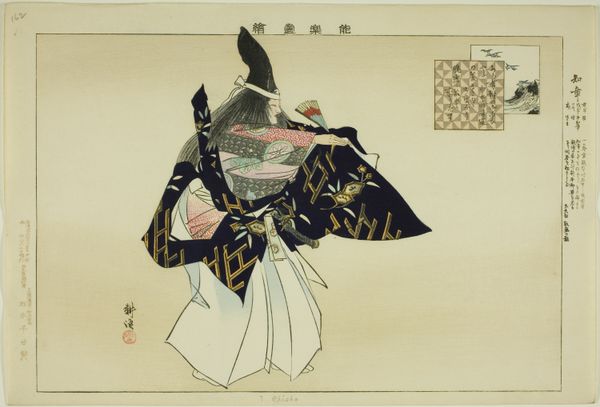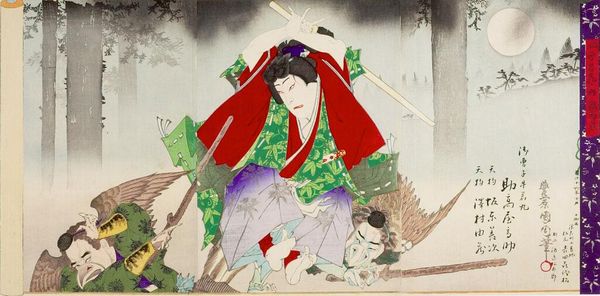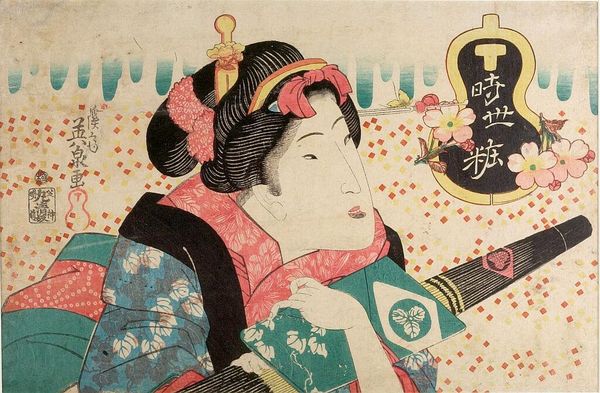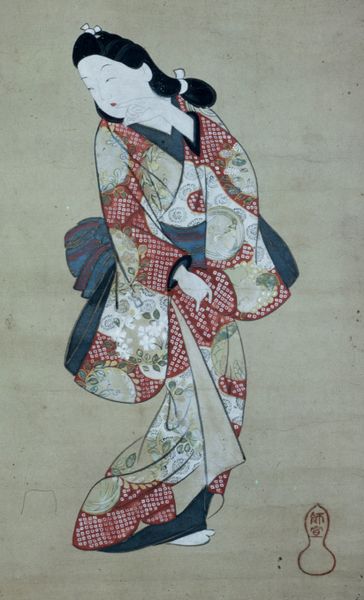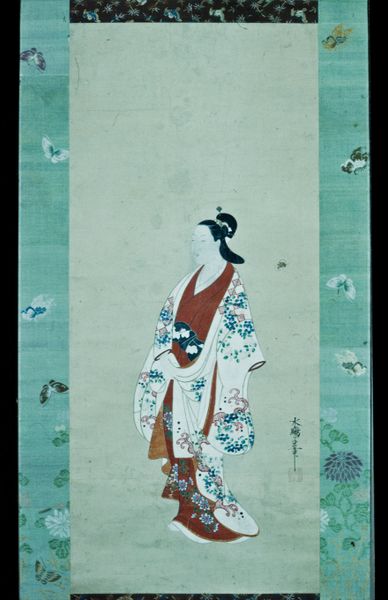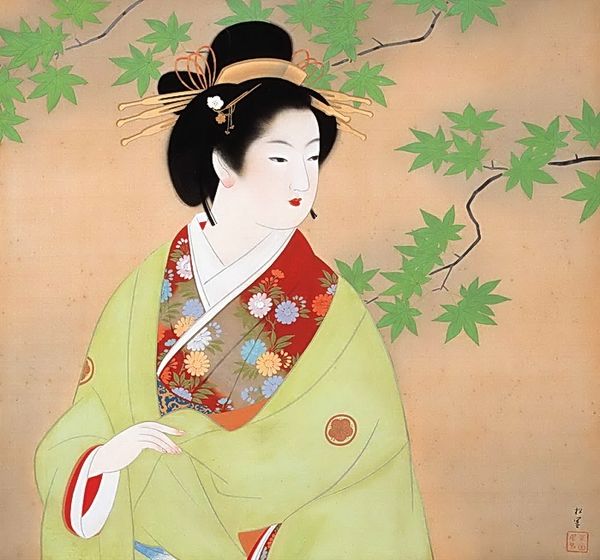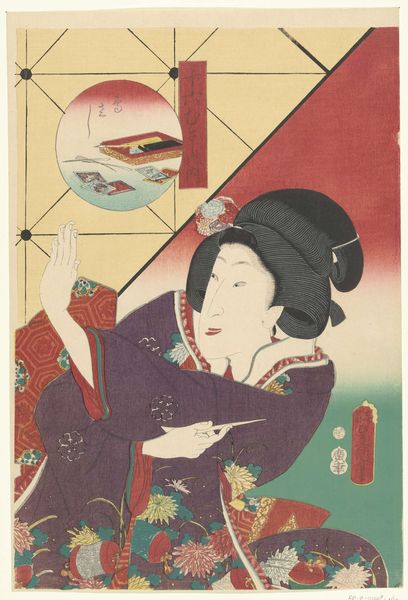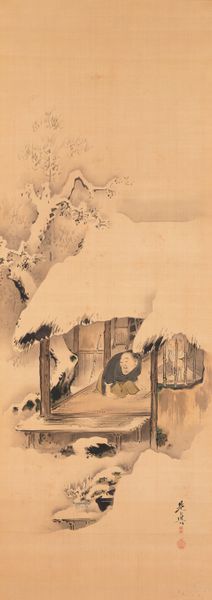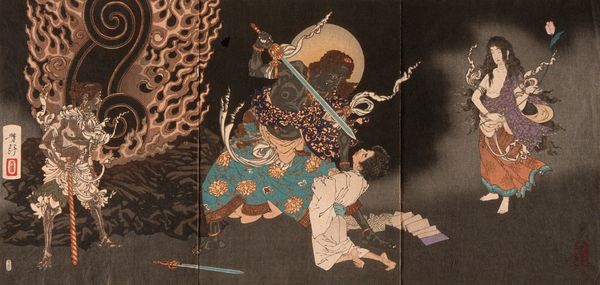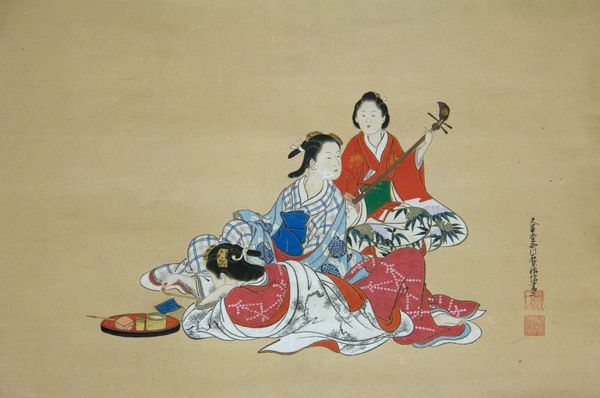
painting, watercolor
#
portrait
#
painting
#
asian-art
#
figuration
#
watercolor
#
genre-painting
#
watercolor
Dimensions: 59 x 71.2 cm
Copyright: Public domain
Curator: So, let's dive into Uemura Shoen’s "Large Snowflakes," painted in 1944. It's watercolor on silk. Two women are walking in the snow, their faces downcast and hidden by their umbrellas. The colors are soft, and the snowflakes are almost ethereal. The composition has a very muted and melancholy mood about it. What strikes you most about it? Editor: The subdued palette really stands out, given the wartime context. I wonder how the materials themselves - the silk and the watercolors - contribute to our understanding of Japanese society and the production of art during that period. What were the challenges and constraints Uemura Shoen would have faced? Curator: Precisely. Consider the silk – it was not simply a surface, but a commodity. Wartime restrictions certainly affected its availability and quality. The choice of watercolor, compared to more traditional mineral pigments, could also reflect material scarcity. Shoen's access to resources and how that shaped her artmaking practices during a tumultuous era definitely influence our interpretation. Were these deliberate artistic decisions or reflections of the economic realities of the time? Editor: That makes me think about the umbrellas as both functional objects and stylistic elements. The level of craft involved suggests access to skilled labor and potentially reflects on class distinctions at the time, but also perhaps represents perseverance and artistry. The almost decorative function that the umbrellas embody highlights these subtle complexities and make them an object of higher art. Curator: Excellent point. And it is the same as the artist herself, making these high pieces of craft despite restrictions or economical issues of wartime. Consider what goes into creating these delicate masterpieces! From silk production and dyeing to watercolor manufacturing and skillful artisanship of painting and textile creation, there's an incredible story of labor and resources woven into this single painting. Does that change how you see the image? Editor: Absolutely. Considering the materials and production reveals the broader historical and cultural context. I initially only viewed this piece with aesthetics in mind. Now, seeing its relationship to wartime scarcity and artistry of labor changes how I experience this piece entirely. Thanks!
Comments
No comments
Be the first to comment and join the conversation on the ultimate creative platform.



